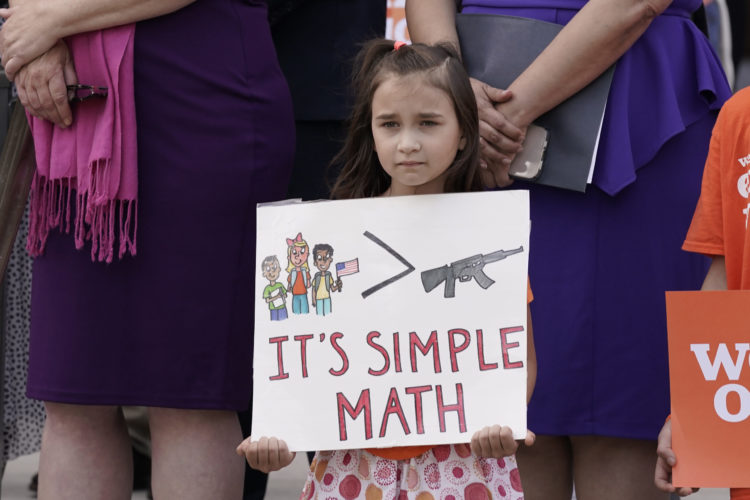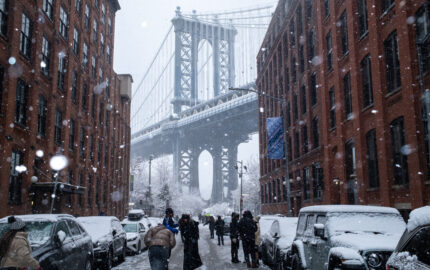After 19 students and two teachers were gunned down in a classroom in Uvalde, Texas, the chorus rose: "Enough!" It came with a sad refrain: "It will happen again."
And it did. As many as 15 mass shootings in the U.S. (defined as a single incident in which four people are killed and/or injured, not counting the gunman) over Memorial Day weekend, and then four at a hospital in Tulsa, Oklahoma. This week President Biden all but begged Congress to do something to restrict access to assault weapons. I logged my own frustration in a newsletter, now available on the Storyboard site. It is mostly a meditation on our public fatigue, and thus inaction.
Because gun violence did and will happen again, and likely again, it's crucial that the press keep the spotlight on bright. Not everyone in the profession is cut out to do that work — and there needs to be no shame in saying "Not me." But some will get that inevitable assignment. If you do, make sure you get support — from colleagues, editors, family, friends, the Dart Center for Journalism and Trauma.
You can also reach out to other journalists who have done this work before. It may feel like an imposition — and we're not especially good, as a culture, at sharing our emotions. But I've never known a fellow traveler who won't step up. It might help them, too.
Most of the larger press sites have collected lists of resources for covering gun violence, as has Poynter.org. For our part, we offer examples of journalism that has approached this toughest of assignments with clarity and compassion. I was heartsick to see how often gun violence has been the focus of featured Storyboard pieces. Read at your own discretion, of course, but sometimes it helps to see that it can be done.
And it did. As many as 15 mass shootings in the U.S. (defined as a single incident in which four people are killed and/or injured, not counting the gunman) over Memorial Day weekend, and then four at a hospital in Tulsa, Oklahoma. This week President Biden all but begged Congress to do something to restrict access to assault weapons. I logged my own frustration in a newsletter, now available on the Storyboard site. It is mostly a meditation on our public fatigue, and thus inaction.
Because gun violence did and will happen again, and likely again, it's crucial that the press keep the spotlight on bright. Not everyone in the profession is cut out to do that work — and there needs to be no shame in saying "Not me." But some will get that inevitable assignment. If you do, make sure you get support — from colleagues, editors, family, friends, the Dart Center for Journalism and Trauma.
You can also reach out to other journalists who have done this work before. It may feel like an imposition — and we're not especially good, as a culture, at sharing our emotions. But I've never known a fellow traveler who won't step up. It might help them, too.
Most of the larger press sites have collected lists of resources for covering gun violence, as has Poynter.org. For our part, we offer examples of journalism that has approached this toughest of assignments with clarity and compassion. I was heartsick to see how often gun violence has been the focus of featured Storyboard pieces. Read at your own discretion, of course, but sometimes it helps to see that it can be done.
- John Woodrow Cox of the Washington Post on child survivors of gun violence.
- Paige Williams of The New Yorker follows a mayor who has to calm her community in the wake of a mass shooting.
- David Montero of the Los Angeles Times does a deadline profile of a pastor whose daughter was a victim.
- USA Today hosted a gathering of 21 Americans to talk about gun violence.
- Jeanne Marie Laskas profiled a massive gun store for GQ to see American gun culture at work.
- Under the leadership of former editor Kari Howard, Storyboard devoted a week of posts in 2017 to coverage of gun violence.
- Patrick Radden Keefe found three doorways into a shooting by a Harvard Ph.D. who had been denied tenure at another university.
- Journalist and educator Matt Tullis visited parents of the 2012 Sandy Hook Elementary School slaughter to learn their perspective on news coverage.
- Eli Saslow of the Washington Post gently immersed into the grief of Sandy Hook parents.
- Again Eli Saslow, with the profile of a badly injured survivor of the 2015 shooting at a community college in Oregon.
- Dave Cullen dove deep into the 1999 Columbine High School shooting in Colorado and then the 2018 Parkland High School in Florida for books to gain a fuller understanding of those events.
- Editor and educator Jan Winburn offered university students a guide to interviewing victims of trauma.



